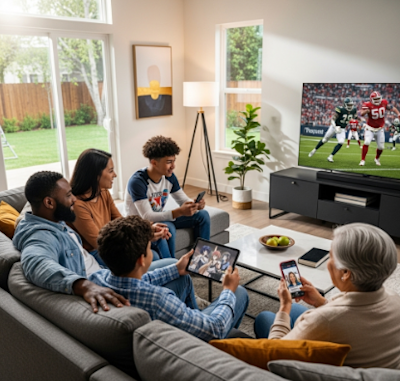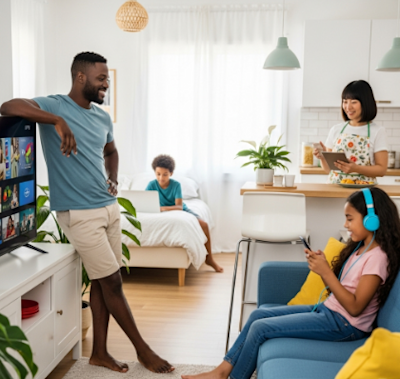In 2025, the age of traditional cable TV in the United States is rapidly coming to an end. More Americans are cutting the cord than ever before — and replacing it with IPTV. From millennials and tech enthusiasts to suburban families and retirees, viewers are turning to Internet Protocol Television as their go-to source for TV, movies, and live channels. But what’s fueling this nationwide migration?
The short answer: value, flexibility, and freedom. IPTV offers access to thousands of channels, streaming content, and live broadcasts from around the world — often at a fraction of the cost of cable. With rising household expenses and growing dissatisfaction with legacy TV providers, IPTV has become a practical, affordable alternative.
Cost is often the first motivator. A standard U.S. cable subscription can run anywhere from $100 to $200 per month. That includes hidden fees, hardware rentals, taxes, and more. In contrast, IPTV services can offer an even broader range of content — including sports, news, movies, kids’ shows, and international channels — for less than half that price. In some cases, you can get a full IPTV experience for under $20 a month.
But IPTV isn't just cheaper — it's smarter. Unlike cable, IPTV doesn’t lock you into fixed schedules or limited on-demand libraries. You can pause live TV, rewind, record, or rewatch at your convenience. You’re no longer bound by prime time or forced to watch reruns. IPTV puts control directly in your hands.
Americans are also drawn to IPTV’s compatibility with modern devices. You don’t need a box, a technician, or a satellite dish. IPTV can run on your smart TV, laptop, tablet, or smartphone. Whether you’re at home or traveling, you can bring your entire TV experience with you. Families can stream multiple channels at once in different rooms — or even different cities — using just one account.
For households with kids, IPTV offers another huge advantage: customization. Parents can set up individual profiles, apply parental controls, and filter content by age. Kids can watch cartoons while adults enjoy dramas or sports. Everything is organized, accessible, and age-appropriate.
International content is another major attraction. The U.S. is one of the most diverse countries in the world, and IPTV caters to that diversity. Viewers can watch news from India, telenovelas from Mexico, variety shows from Korea, or French cinema — all without needing to switch platforms. For immigrant families or multicultural households, IPTV provides a meaningful way to stay connected to home.
As privacy and data security become more important to Americans, IPTV platforms are stepping up. Many now offer built-in VPN support, encrypted data streams, and two-factor authentication. These features give users peace of mind, knowing their viewing habits and personal data are secure.
Tech-savvy users appreciate how IPTV integrates with other smart home devices. From voice-activated playback using Alexa or Google Assistant to routines that dim lights when a movie starts, IPTV fits seamlessly into the modern American household. Entertainment is no longer passive — it’s interactive and automated.
The content variety is staggering. From blockbuster movies and award-winning series to niche sports, indie films, and global news — IPTV platforms have it all. Some services even offer curated content packs for genres like true crime, science fiction, or anime, making it easier to discover new favorites.
Live events, once dominated by cable providers, are also thriving on IPTV. You can stream concerts, sports tournaments, breaking news, and political debates in real-time — often in higher quality and with fewer ads. Catch-up features allow you to replay key moments or watch full events later.
Another important factor is user experience. IPTV platforms today are sleek, fast, and easy to navigate. Forget confusing menus or slow interfaces — IPTV apps are designed with users in mind, offering intuitive layouts, voice search, and even smart recommendations powered by AI.
IPTV also represents a shift in how Americans think about television. It's no longer about flipping channels — it’s about choosing exactly what you want to watch, when, and how. It reflects broader changes in consumer behavior: demand for personalization, rejection of monopolistic pricing, and a desire for flexible living.
In the end, IPTV isn't just a new technology — it's a new philosophy for how we consume content. And for millions of Americans in 2025, it's the obvious choice.










